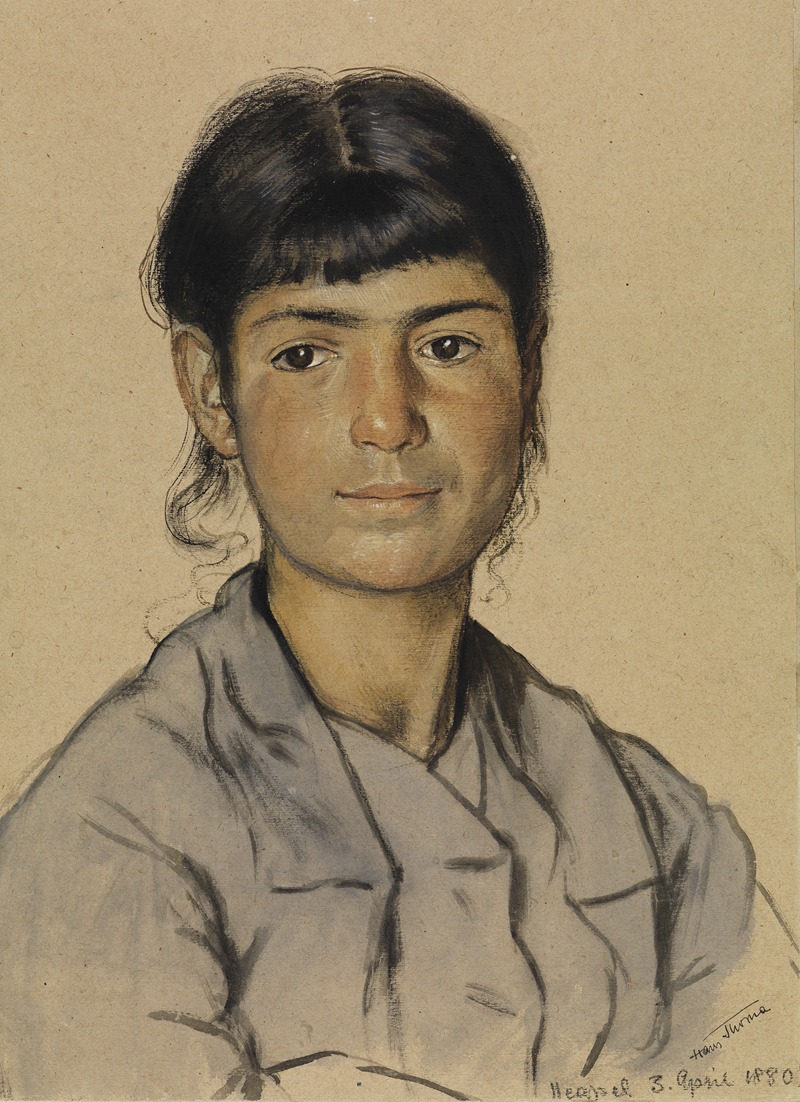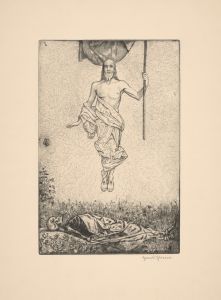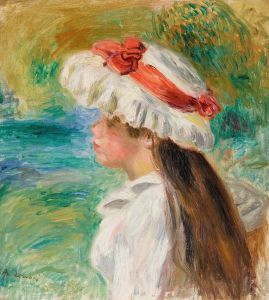
Portrait of a young Neapolitan woman
A hand-painted replica of Hans Thoma’s masterpiece Portrait of a young Neapolitan woman, meticulously crafted by professional artists to capture the true essence of the original. Each piece is created with museum-quality canvas and rare mineral pigments, carefully painted by experienced artists with delicate brushstrokes and rich, layered colors to perfectly recreate the texture of the original artwork. Unlike machine-printed reproductions, this hand-painted version brings the painting to life, infused with the artist’s emotions and skill in every stroke. Whether for personal collection or home decoration, it instantly elevates the artistic atmosphere of any space.
"Portrait of a Young Neapolitan Woman" is a painting by the German artist Hans Thoma, who was born on October 2, 1839, in Bernau in the Black Forest and died on November 7, 1924, in Karlsruhe. Thoma is known for his landscape paintings, portraits, and genre scenes, often characterized by a blend of realism and romanticism.
The painting "Portrait of a Young Neapolitan Woman" is an exquisite example of Thoma's portraiture work. It depicts a young woman from Naples, Italy, showcasing Thoma's skill in capturing the essence and character of his subjects. The exact date of the painting is not definitively known, but it is believed to have been created during Thoma's mature period when he had already established himself as a prominent artist in Germany.
In this portrait, the young Neapolitan woman is presented with a serene and contemplative expression. Thoma's attention to detail is evident in the delicate rendering of her facial features, the texture of her clothing, and the subtle play of light and shadow. The background is kept simple, ensuring that the viewer's focus remains on the subject. The use of color is restrained yet effective, with a harmonious palette that enhances the natural beauty of the woman.
Hans Thoma's work was influenced by his studies and travels. He studied at the Karlsruhe Academy of Fine Arts and later spent time in Paris, where he was exposed to the works of Gustave Courbet and the Barbizon School. These influences are reflected in his approach to realism and his ability to convey the individuality of his subjects.
Thoma's career was marked by several significant achievements. He became a member of the Berlin Academy in 1899 and was appointed director of the Karlsruhe Art Gallery in 1899, a position he held until 1920. His contributions to the art world were recognized with numerous awards and honors throughout his lifetime.
"Portrait of a Young Neapolitan Woman" is a testament to Thoma's mastery of portrait painting. It captures not only the physical likeness of the young woman but also a sense of her inner life and personality. The painting is part of Thoma's broader oeuvre, which includes a diverse range of subjects and styles, reflecting his versatility and depth as an artist.
Today, Hans Thoma's works are held in various public and private collections, and he is remembered as one of the significant figures in 19th-century German art. His portraits, including "Portrait of a Young Neapolitan Woman," continue to be appreciated for their technical excellence and emotional resonance.


















